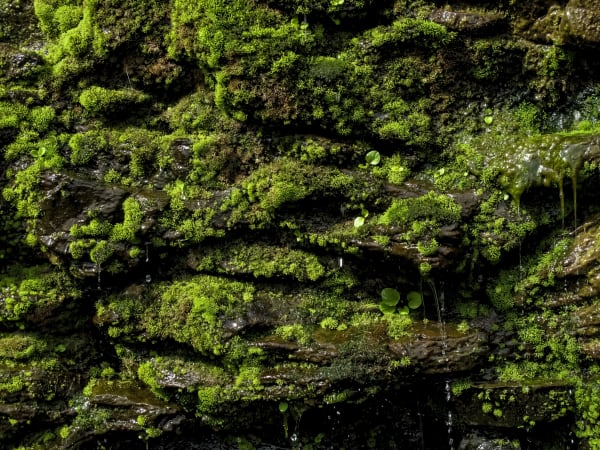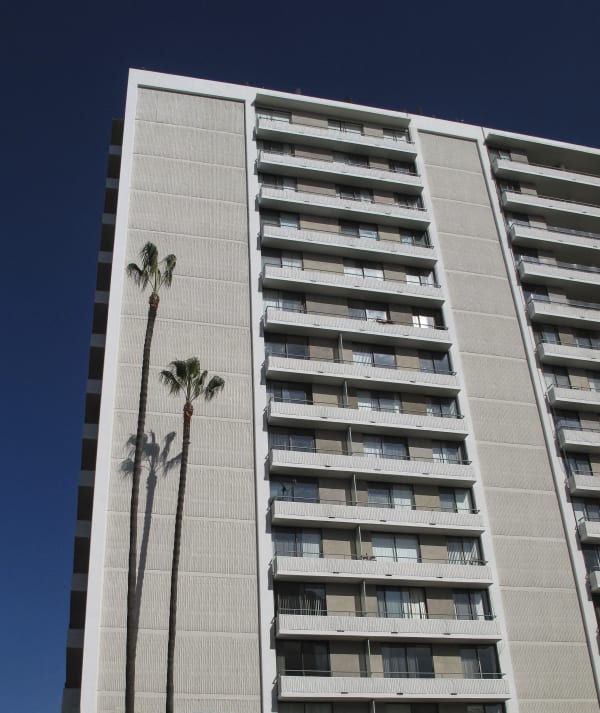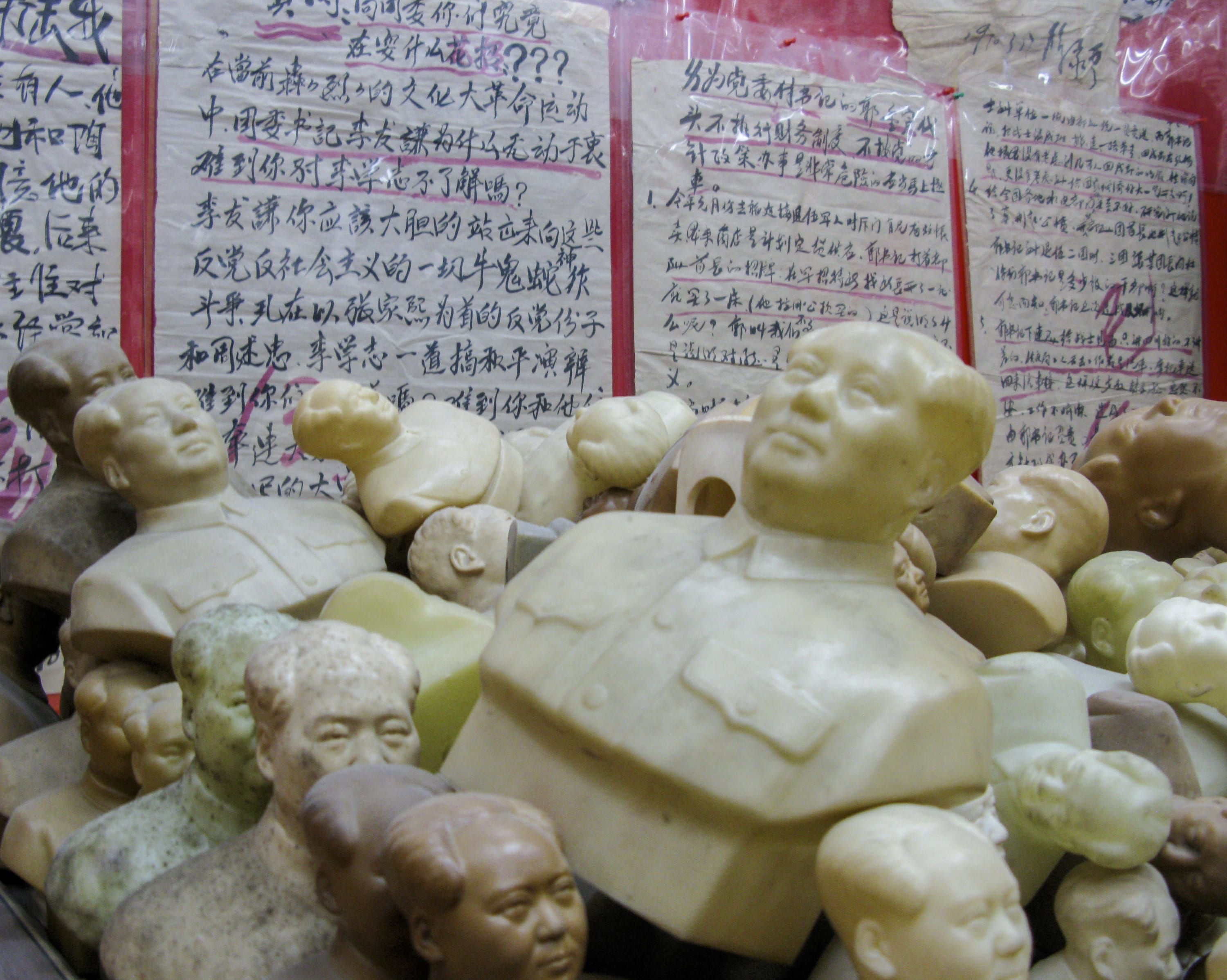-

-
 Photo credit: Jessica Burstein
Photo credit: Jessica Burstein -
 Washington, DC, 1968
Washington, DC, 1968 -
 Lincoln Highway, Utah, USA, 1972
Lincoln Highway, Utah, USA, 1972 -
Crime-Scene Aesthethic
Excerpts from "René Balcer’s Seeing As and the Crime-Scene Aesthetic," by Robert HobbsDownload the full text of "René Balcer’s Seeing As and the Crime-Scene Aesthetic," by Robert Hobbs
"I am suggesting that some of Balcer’s most distinctive images participate in the grand historical and metaphorical tradition that joins photography with detective work; the flâneur’s openness to a changing world with urban crimes; and 'seeing as' with eminently metaphoric meanings. Balcer’s type of forensic aesthetic resonances with photography’s history, with Barthes’s assessment of its noeme, and with our preponderantly surveillant society in which even an innocent trip to a cash machine can potentially be viewed as a potential crime setting, making this aesthetic both ubiquitous in our time and especially relevant to it."
-
 René Balcer at Indigenous rights demonstration at Columbus Circle, June 2020
René Balcer at Indigenous rights demonstration at Columbus Circle, June 2020 -
 Fort Simpson, NWT, Canada, 1975
Fort Simpson, NWT, Canada, 1975 -
 Resolute, Nunavut, Canada, 2016
Resolute, Nunavut, Canada, 2016 -
"Pangnirtung, Nunavut, Canada, 2022 - This is Jolly Atagoyuk, an artist in Pangnirtung. The second photo shows him with his two granddaughters and their friends. He told me about his four step-mothers—actually foster mothers who helped raise him. He told me, 'They taught me how to survive.' I heard that a lot from people in the Inuit community, how their parents, fathers, grandparents taught them 'how to survive.' They mean that their elders taught them how to hunt and fish, how to live on the land, to care for the land and the animals who live there. Even children refer to these skills as 'learning to survive.' In times past, these skills were essential for the literal survival of Inuit communities. Famine was an ever-present threat, and even as late as the 1960s, a family clan could starve to death if a migrating caribou herd diverted 100 miles one way or the other off its usual route. Today, with grocery stores in every community stocked with over-priced southern fare that must be flown in and is often past its due date, hunting and fishing for 'country food' has come to mean another kind of survival—of Inuit culture, of its identity and what it means to be an Inuk. Now through his art, Jolly is teaching his granddaughters how to survive."
-
More Photographs from "North"
-
DESAPARECIDOS
A Series Comprised of 44 Photographs, 2009 -
Excerpts from "RENÉ BALCER: THE GATEKEEPERS OF LA RECOLETA," by Marcos Zimmermann
"Coming from quite a different background but armed with a premonition that seems guided by a compass, Balcer pointed his camera at Recoleta, the porteño neighborhood where he stayed for a short time during a visit to Buenos Aires. But it was plenty of time for him to come up with a completely engrossing photographic essay. In particular, it is a project that, at first glance, seems to feature a certain simplicity, but which, when studied from a more profound point of view, takes on a much deeper dimension."
-
"But what is it that René Balcer wants to make us see? As soon as he told me the title of his essay, 'Desaparecidos,' and knowing that he was a foreigner, I felt compelled to warn him of the meaning and heaviness that this word implies for the Argentine population. A word that refers to the most shameful event in our contemporary history, perpetrated by the dictatorship that ravaged our country from 1976 to 1983. In that period, more than 30,000 Argentines, now desaparecidos, were tortured in concentration camps, killed, or thrown alive into the sea during 'death flights,' for political reasons. Faced with this warning, Balcer explains: 'I was of course aware of the original meaning. But in this essay the word 'desaparecidos' has a different meaning. The 'desaparecidos' in this case may be the well-heeled residents who disappear behind their ever fancier 'porteros eléctricos,' seeking refuge from social realities and responsibility, while the lower classes have no such protection.' They are the descendants of those Argentines from the Belle Époque era who—according to Balcer—nowadays disappear from the gaze of the rest of the population, denying the reality that surrounds them, hiding behind their electric gates, and isolating themselves from any contact with the nation’s commoners. In this way, Balcer imposes a diametrical change to the meaning of the word desaparecidos. An act that, to most Argentines, would seem to conspire against the immense symbolism of this word in our country. But, as strange as it may sound, and though “the disappearers” would be a more suitable term in this case, his idea becomes ever more valid as we dive into the depths of his essay."
-
Reflections by Balcer

Barrio Recoleta No. 2, Buenos Aires 2009, 2009, Dibond print, 30 x 22 in
-

Puerto Bemberg No.1, Argentina 2009, 2009, Dibond print, 18 x 21 1/2 in
-
Decay
-
Excerpts from "Decay as Reconstruction," by Ghiora Aharoni
"The Grand Shrine in Ise, Japan is one of the most sacred sites of the Shinto religion...and the embodiment of a 1300-year-old practice of venerating the structure’s deterioration, as well as the discreet wisdom this practice personifies, which—like René Balcer’s photographs—calls into question our perception of decay.
Images of a zig-zagging fissure rupturing a faded brick wall. Coils of rusted steel bands leaning intimately into one another. Amoeba-like stains huddled together on a curtain that’s yellowed over the years. Through Balcer’s lens, these images become imbued with a new energy that is the sometimes spontaneous, sometimes organic process of matter whose narrative is simultaneously dissolving and evolving. And what is Balcer asking us to read into that narrative? Perhaps the notion that corrosion, rather than being an instrument of destruction, is a generative process of reconstruction. [...]
When Balcer explores the nature of decay in the decay of nature, his eye frames spontaneous moments into compositions of color and form: a circle of dried leaves engulfed in a vibrant green parallelogram of voracious ivy creates a lyrical moment that juxtaposes death with life, and simultaneously evokes the environmental work of Robert Smithson’s Spiral Jetty or Andy Goldsworthy’s Rowan Leaves Laid Around a Hole. Like the work of these two artists, the form marries two seemingly incongruous realms for the mind’s eye, where the mathematical order of geometry harnesses (at least temporarily) matter from the natural world in the service of art. Though rather than being methodically constructed and left to decay—as is the method of both Smithson and Goldsworthy—Balcer’s ivy parallelogram has inverted that process, an organic manifestation, rather than constructed, erupting from decay of its own volition.
Balcer’s eye for composition is equally engaged with the quiet allure of abstract forms, where he re-situates deteriorating strata into lyrical expanses of restrained and monochromatic palettes. His tightly-cropped photographs of mottled surfaces eroded by the elements seem parallel precise to the heavily layered and meticulously worked surfaces of Gerhard Richter’s paintings."
-
"The idea of the artist venerating the beauty inherent in decay versus a precisely constructed notion of perfection began in Renaissance paintings focused on the splendor of architectural ruins, and was central to 18th- and 19th-century artists in search of the 'Sublime' and the 'Picturesque.' This encompassed, among other things, a taste for what was wild and rugged in nature. According to William Gilpin, the Picturesque view should contain a castle, a ruin, or, as he writes, 'some other object that suits its dignity.' With the rise of industrialization, objects that were once crafted by hand and retained small traces of uniqueness, began being machine produced as identical objects. This shift from the hand-crafted to the homogenous prompted artists to search for the sublime in the disarray of ruins.
Balcer takes this notion a step further with images that capture man-made objects—both mundane and sacred, from discarded industrial materials to fragmented icons—colliding with the natural world, producing unnatural entanglements of surfaces and textures. Seemingly a result of human lassitude, are they a cautionary commentary on our abuse of the planet, or an arrested moment of the Earth’s victory over humanity’s 'material colonization?' Balcer’s aesthetic reincarnations of these objects in situ, which have fulfilled their initial function and have been left to decay, creates an opening that circumnavigates prescriptive interpretation.
Balcer’s recontextualizations shift our perspective and evoke a sense of wonder in the unexpected that runs counter to the Western inclination of trying to arrest decay and retain a pristine reading that fixes something to a specific narrative. By subverting that notion, he invites us to discover the narratives that emerge from the absence of order, in the messiness of decay, where there is space for imagination."
-
THE BELEAGUERED TREES OF L.A., 2011-2020

-
By René Balcer
"This tree is a few blocks from my home in West L.A. It’s been there for as long as I remember. A beloved, healthy and well-maintained member of the community. On the day I took this photo, I noticed the tree was providing shelter and privacy to an unhoused person, a member of the L.A. community who was less healthy, less well-maintained and certainly less beloved than the tree that sheltered him. As far as I could tell, he was returning the favor, keeping the root area orderly and trash-free. The last time I drove by, the tree was still standing and still growing with no signs of faltering. So was L.A.’s housing crisis. It’s even money which one will outlast the other."
-
Seeing As: China
-
Excerpts from "Introduction," by Xu Bing
"I had an appointment to see an ophthalmologist today. I can’t be careless about my eye problem because it concerns my ability to see the world. But when I got to the hospital, I was told that my Covid test result had passed the 72-hour limit, newly required by the government, and so I couldn’t see the doctor. Instead, I had to go look for the nearest Covid test site. While waiting in a long line at the testing station, I browsed through the photos my friend René Balcer took. I had downloaded them on my cellphone just before I left home. His photos are going to be published, and I’m going to write something about them.
Over meals and cups of tea across the years, René, a well-known screenwriter and producer, had often shared with me his latest photos, like a child showing his newest treasures. The photos saved on my phone were taken in China between 2005 and 2019. The start of the pandemic in 2020 put a temporary halt to René’s photography project in China.
According to available records on photographic history in China, Dr. Richard Woosnam and Major George Malcolm, assistants to Britain’s first colonial Governor of Hong Kong Sir Henry Pottinger, were the first photographers to shoot in China. That was in 1842, but their photos have never been found. A collection of photos taken in Macau in 1844 by the Frenchman Jules Alphonse Eugène Itier is the earliest photographic record of China in existence. There’s no doubt that René’s photos will carry that history forward.
I’m not a photography historian. But standing in real time in the bustling streets of China while looking at the frozen scenes of China in the photos taken just a few years ago by a Westerner, I find myself enveloped by an immediate yet disorienting sensation of traveling through space and time, which I believe, is an uncommon experience, even for scholars of photography."
-
 Ningbo, 2019
Ningbo, 2019 -
 Ningbo, 2014
Ningbo, 2014 -
 Shanghai, 2015
Shanghai, 2015 -
 Shanghai, 2009
Shanghai, 2009 -
By René Balcer
"Shanghai, 2009 - I found these 'Big Character' posters and busts of Mao in an improvised museum of Cultural Revolution artifacts in Shanghai. Despite appearances, the Mao busts are hollow and made of cheap rubber, designed for mass distribution to a populace eager to display their devotion to the Great Helmsman. The Big Character posters (dazibao) originated as raging denunciations of faculty at Peking University posted on campus walls by students in May 1966. Soon after, dazibao sprouted like vines across every university campus, targeting party officials along with counter-revolutionary school administrators. People from the community at large flocked to campuses to read the posters. Even middle school students like my friend the artist Xu Bing went to learn to write dazibao. He told me he had no idea what he was writing, he just enjoyed drawing the large characters."
-
 Taiyuan, 2012
Taiyuan, 2012 -
 Dahuodi, 2018
Dahuodi, 2018 -
BLM Summer
-
BLM Summer
By: René Balcer"BLM Summer, 2020 - Covid had ground the country to a halt—then on May 25, 2020, George Floyd was murdered by police officers in Minneapolis. Within hours, the streets of American cities filled with protesters. The early outbursts of rage, violence, and occasional looting were quickly replaced with disciplined and purposeful daily marches throughout the summer and into the fall. The organizers were young, for the most part Black and always impressive—I hope we haven’t heard the last of them. BLM was joined by Yellow Peril and First Nations, reviving the civil rights coalition of the 1960s. Richmond, the capital of the old slaveholding Confederacy, saw its sentimental statue of Confederate general Robert E. Lee turned into a great public work of protest art. The end of the year found our one-term, twice-impeached Malingerer-in-Chief Donald J. Trump ensconced in the White House behind his wall of White Supremacy, plotting to sacrifice American democracy on the altar of his wounded ego."
-
In Conversation with René Balcer and Yasufumi Nakamori, Former Senior Curator of Photography at the Tate Modern and Current Director of the Asia Society, New York
-
Where I Stand
-
Works in Other Media
-
Backbone

-
"BACKBONE (2011) in collaboration with Xu Bing, Virginia Tobacco Project 2011. While browsing the archives of the Valentine Richmond History Center, a museum dedicated to the history of the greater Richmond area, Chinese artist Xu Bing became fascinated with a collection of historical stencils that were used to print tobacco brand names on boxes and crates. The romantic and suggestive nature of the brand names—DEW DROP, OH MY, VIRTUE, BLACK SATIN, QUEEN OF THE EAST, etc.—led Xu Bing to ask his friend René Balcer to collaborate on a new work.
Xu Bing’s interest in language, coupled with Balcer’s background as a writer proved to be a fruitful combination. Configuring fifty-three stencils from hundreds of options—some repeated but with no other words added—Balcer created a free-verse blues poem that he describes as an homage to the enslaved African American women who labored on tobacco plantations. The final work is a piece of concrete poetry that has the rhythm and cadence of a traditional blues song.
Indeed, this resemblance led Balcer to recruit Captain Luke Theyer and Big Ron Hunter, blues musicians from Winston-Salem, North Carolina, to record a song using the words from the piece.
Xu Bing’s and Balcer’s unusual interrogation of history and material culture led to the creation of these genre-bending works that profoundly reveal underlying truths about the history of tobacco production in the American South."
Download "Backbone: Two Friends at Work," by René Balcer
-
 Xu Bing and René Balcer, "Backbone"
Xu Bing and René Balcer, "Backbone" -
"WATCHING TEA LEAVES IN SHANXI (2013), 12:54 min. Filmed December 29, 2012 in Taiyuan, Shanxi province, China. After a cold day exploring the sacred mountains outside Taiyuan, we had taken refuge in the cafeteria of the Shanxi Museum. We ordered food and tea in tall glasses. While my wife chatted with her parents and cousin at one end of the table, I sat at the other. I became fascinated by the movements of the tea leaves in my glass. Soon, I fell into a dream of China. My mind emptied, sacred and profane thoughts drifted by, carrying me along like a desert wind…."
-René Balcer
-
"BLUE SKY (2013), 6:01 min. Filmed June 15, 2012 at the Hotel Le Negresco, Nice, France. While my wife napped in our hotel room, I sat on the balcony, looking out on the ocean. Listening to the happy laughter of children playing in the surf, I thought of my great grand-uncle Eugene. Having sold his successful leather glove company in Québec, he spent the last years of his life travelling through Europe, married a Dutch princess in London and died a year later in 1937 of a heart attack at age 75 while sojourning at the Hotel Le Negresco. The very same Hotel Le Negresco on whose balcony I was basking in the brilliance of the blue Mediterranean sky. Down by the beach, a motorboat was pulling a man dangling from a Happy Face parasail. So much happiness everywhere. I thought of Uncle Eugene…."
-René Balcer
-
Select Filmography
-
Select Publications
-

Seeing As: René Balcer
Award-winning writer René Balcer is best known for his hit series Law & Order and Criminal Intent. Much less is known about his startling photographic work, shared only with his... -

Law and Order New York Police Judiciaire: La justice en prime time
Law & Order has toured the world. Translated into some 100 languages, it is the longest-running legal series in American television history, and even after 20 years on the air,... -

TV Cops: The Contemporary American Television Police Drama
The police drama has been one of the longest running and most popular genres in American television. In TV Cops , Jonathan Nichols-Pethick argues that, perhaps more than any other... -

Desperate Networks
In the executive offices of the four major networks, sweeping changes are taking place and billions of dollars are at stake. Now Bill Carter, bestselling author of The Late Shift... -

Monte Hellman: His Life and Films
'I just did it, and I probably made more mistakes than the average person who makes a first film. I didn't really have any help, and I wouldn't take any... -

East Asian-German Cinema
The Transnational Screen, 1919 to the PresentThis is the first edited volume dedicated to the study of East Asian-German cinema. Its coverage ranges from 1919 to the present, a period which has witnessed an unprecedented degree...
-
Join our mailing list
* denotes required fields
We will process the personal data you have supplied to communicate with you in accordance with our Privacy Policy. You can unsubscribe or change your preferences at any time by clicking the link in our emails.





































































